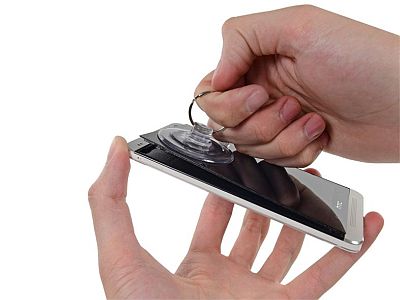Now the time has come for HTC One that apart from modern trends in physical design follows the trends in design, which means that the device is nearly impossible to fix, but in the case of failure the simplest thing to do is to obtain a new one. HTC One very poorly passed to iFixit teardown test and was given only one given point on the scale the serviceability of 1 to 10, with 10 points means easy retrieval device.
According to iFixit experience, HTC is almost impossible to disassemble without damaging the body, mainly because of heavy use of glue in the connection between the screen enclosure and aluminum structure, stuck battery box and copper protective film used to isolate the motherboard and electronics. The latter is also very difficult to remove and replace, and problem for the repair could be especially concerned about those who break the screen which tends to happen frequently by accident, which in the case of HTC One means and provision of a new cell phone.
[Ed - This is an interesting turn of events. Typically it is Apple that has the worst repairability scores, but that seems to have changed. Now we have HTC building high-end disposable phones. This is not a good thing for the market at all. The thought process that designs a top-end product to be discraded rather than repaired is one that disregards the consumer. Of course this type of thinking best benefits the manufacturer and the carrier. It keeps people in the cycle of replaing their phones as they start to fail instead of trying to get more life out of them. However, this thinking will generally have a very negative effect on the market in the long run. Anyone remember the "Free" and $100 PCs a few years ago? It was the same thinking and it hurt the PC market. If this becomes a common trend you can expect it to hurt the smartphone market as well.]
Tell us what you think in our Forum




